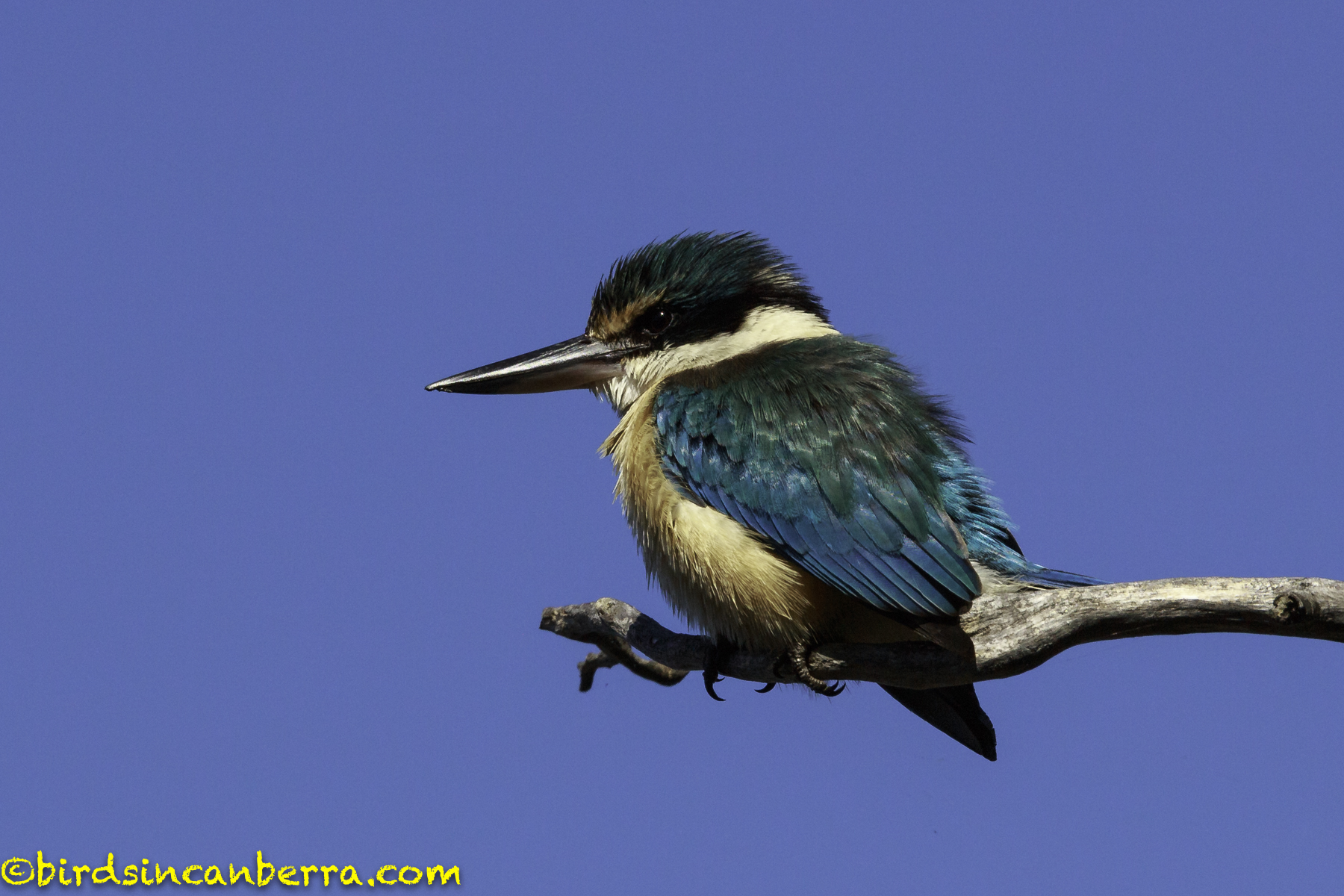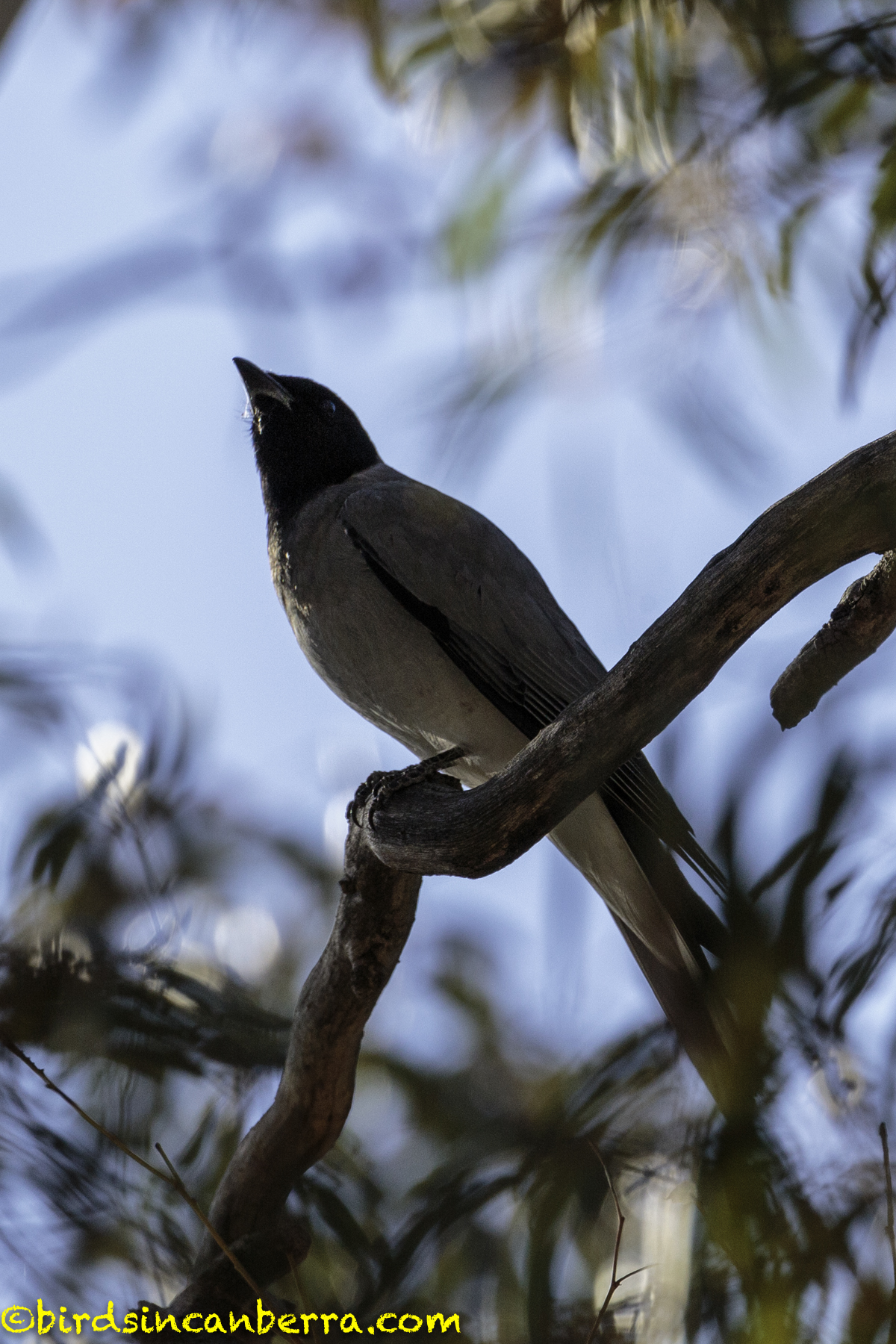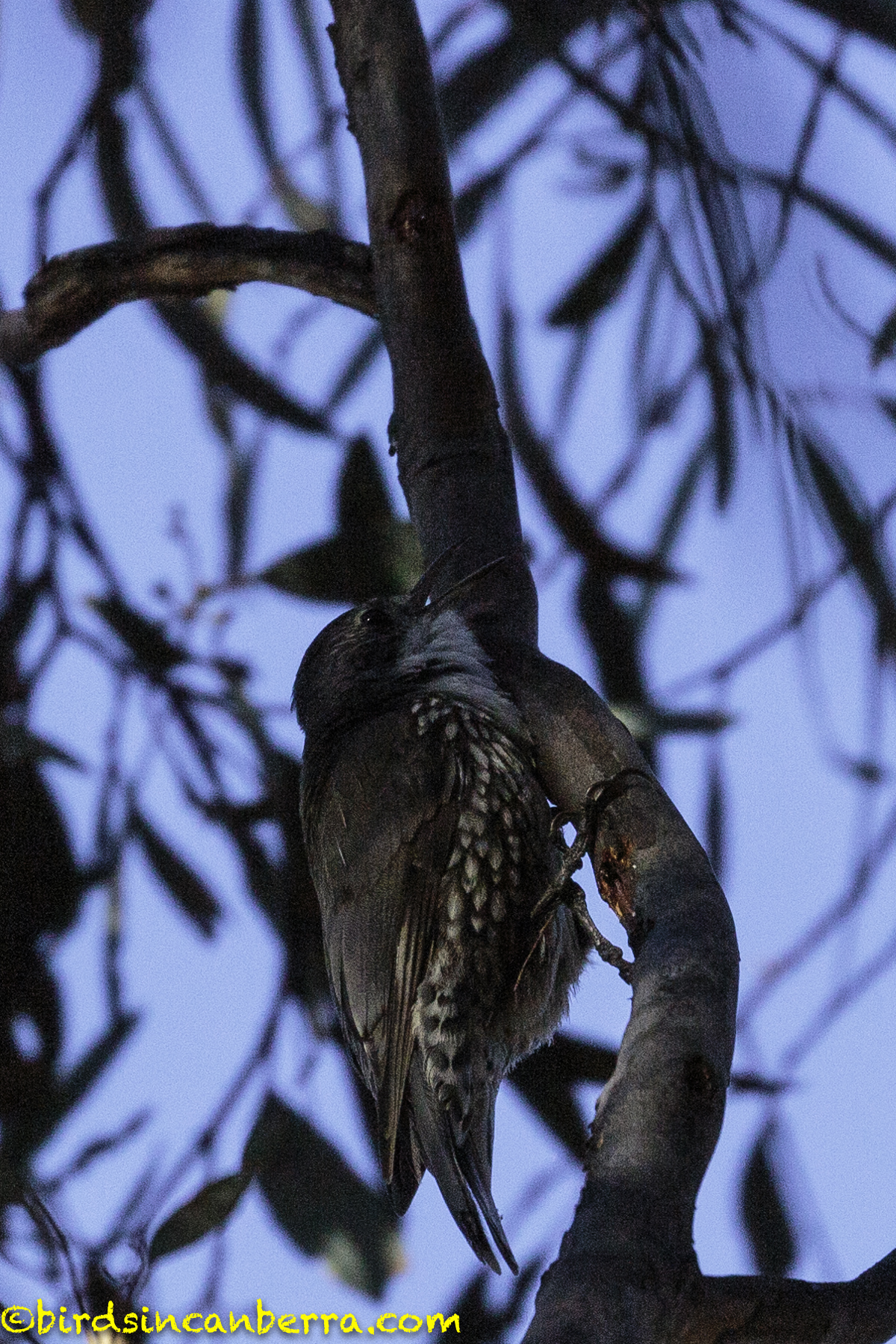At the base of Black Mountain there is a part of the Australian National Botanic Gardens that extends outside of the fence, so is open earlier than the rest of the garden. It is is the Bushland Nature Walk. A 1.2 km walk that roughly follows the contour of Black Mountain taking you to a sturdy viewing platform with a panoramic view looking east over Lake Burley Griffin and Canberra. There are also a number of information boards along the way explaining about the vegetation you are seeing. I had wanted to do this walk for a while and the public holiday presented the perfect opportunity. From the moment I started the walk there was so much birdlife. I saw Fairywrens, a Red Wattlebird and a Black-faced Cuckoo-shrike. It was a good harbinger of what was a very enjoyable walk through some lovely bushland on the edge of Canberra with a spectacular view at the end of it. If that walk had not been enough I decided to drive home via the western end of Lake Burley Griffin to see what birdlife was around, I thought I would practice using my car as a mobile hide. I am so glad I did as I was rewarded with the opportunity to take some photos of a richly coloured Sacred Kingfisher, a type of bird I really love but have not had a chance to photograph yet. I hope you enjoy these pictures as I really enjoyed taking them.
This was just part of the view that awaited me at the end of the walk
As I wrote in the introduction, there was birdlife from the moment I left my car. The bird that first caught my attention was a Black-faced Cuckoo-shrike. It was flying between several trees calling from each one. I only saw a single bird although there may have been more around.
I also saw a Grey Fantail in the same area, although it was very hard to photograph. There may have been two as I am sure I saw two very similar birds moving through the trees but I could only get a good look at one of the birds. I apologise for the quality of this image, it is blurry, but it was the only shot I could get of this bird that does not like to stay still for long.
I saw Red Wattlebirds at various locations along the walk, and as you can see from the right hand photograph, they did not always want to cooperate to have their picture taken. They were calling throughout most of the time I was on the walk and I think I may have seen them chasing some of the smaller birds away.
The Noisy Friarbird was a new bird for me. I had seen pictures of it but I had never seen it in real life. I heard this bird well before I saw it. When I finally did see it I thought how well it was camouflaged with its dark grey plumage on the dead branch. It was calling regularly, often at times seemingly to fill the breaks from when the Red Wattlebird was calling. I am not sure why it has a bald head but it may have something to do with how it eats so its head feathers do not get covered in pollen. I saw these birds across the walk, although commonly taking advantage of being high up in dead trees.
This White-throated Treecreeper appeared in a tree when I stopped to let the bush get back to normal. This bird was living up to its name by creeping up a tree. Interestingly, in the first photograph it appears to have what looks like a spiders web in its mouth. It did not climb straight up the tree but almost corkscrewed up. It would seem to do a few branches before moving to a separate tree.
It is never easy taking photographs of thornbills, including these Buff-rumped Thornbills. They move between locations very quickly. The first two shots were off an individual earlier in the walk while the third shot is of another thornbill further on.
After leaving the Australian National Botanic Garden I returned to the spot on Lake Burley Griffin where I had been on 9 September this year. Whether coincidence or because they alway use this dead three, there were once again three Little Pied Cormorants in the same dead tree as there had been a few weeks before. This time I was using my car as a mobile hide so I was able to get closer than last time, although I did learn that you need to turn the engine off. Not to avoid scaring the birds but I notice when I rested my camera on the window there were vibrations that, although small, did affect most of the shots I took there. A lesson well learned fortunately before I photographed the next bird. Two of the three birds were essentially preening themselves, while the middle bird, shown in the first photo as the bird at the top right was the most active. Yes, in the third photograph it is defecating. The second time the bird did it in the few minutes I was watching. Birds seem to move their whole bodies before they expel waste from their insides, so it was clear what was happening hence why I could get a photograph. Shortly after that action was complete it took off. I was waiting for the other two to follow but they stayed put the whole time I was at the lake.
The final bird I saw on that day was this Sacred Kingfisher. While photographing the cormorants I noticed a bird fly towards the trunk of a willow but hover from it then fly to a branch of a dead tree. I took a photograph before I realised it was a kingfisher. The bird was in a bad place to get a good shot as the willow branches were sometimes covering it. I moved around in the car and was able to get a shot through the branches but I still wanted a better angle.. I was worried that if I tried to move closer on foot I would spook the bird. Fortunately there was a ramp parallel to the branch the bird was on so started the car again and slowly let it move forward, all the time expecting the bird to fly off. To my pleasant surprise, the bird stayed happily on its branch, allowing me to park close by and continue shooting from my car. The bird was mainly looking out over the lake to southeast. It would occasionally turn to look towards where the cormorants were but it did not seem overly concerned. It would regularly twist its head as you can see in the bottom photographs. The first photograph shows a very rare time when it looked in my direction. The bird was not worried when a kayaker paddled nearby either. I eventually put my camera down after taking so many photographs. I just continued to watch the bird, admiring its beauty. The bird finally flew off to the southeast, although I could not see where to or whether it was going after food. I decided to go home as I figured that was a great high to finish photographing for the day. What a lovely way to end the morning, I was in a very bright mood the whole way home.





















